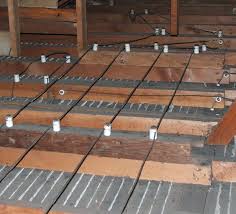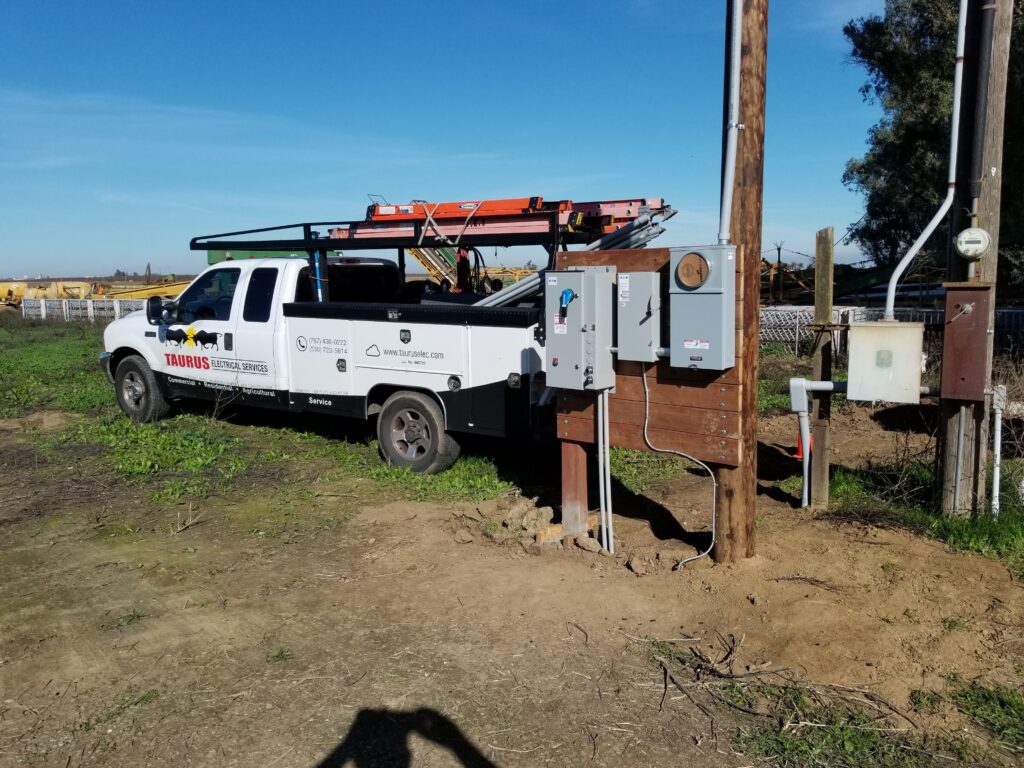Homes with knob and tube wiring service and aluminum wiring require specialized maintenance and care. Taurus Electrical Services can assist you in preventing issues and eliminating serious safety risks.
Knob-and-tube wiring (K&T) is an outdated electrical wiring system commonly used for commercial and residential installations from the late 1800s to the mid-1900s.
The preferred methods of whole home rewiring have changed over the years. Even though knob-and-tube (K&T) wiring was popular about 140 years ago, it is now considered insufficient and hazardous. Many old buildings still have K&T wiring, which is not safe.
Aluminum wiring typically has an expected lifespan of about 30 years, and the connections in the wiring can generate enough heat to ignite a fire without triggering the circuit breaker. While aluminum wiring is favored for its weight, conductivity, and affordability, incorrectly installed aluminum wire can present significant safety hazards. This is why aluminum electrical wiring is a primary factor that may necessitate electrical wiring repair in your home.
Call us and experience the Taurus Electrical Services difference. Taurus Electrical Services leaves every home safer than we found for repairs, installation, enhancements, and peace of mind.
It’s important to prioritize the safety of your family and home by addressing fire risks associated with knob and tube or aluminum wiring. Regular maintenance checks are crucial for identifying any signs of wear, overheating, or damage. An experienced electrician from Taurus Electrical Services can thoroughly inspect your electrical system to detect and correct any faulty connections or deterioration that may pose a fire risk.
Following the inspection, tailored solutions will be recommended to address your specific circumstances. To enhance safety, electrical components such as outlets and switches will be replaced with models designed specifically for aluminum wiring. This proactive approach ensures compatibility and minimizes the likelihood of future problems.
Aluminum wiring can pose a fire risk due to issues related to expansion, micro-fretting, and arcing at connections.
Uncovering the Safety Risks of Knob and Tube Wiring
The following are the important concerns related to K&T wiring and the rationale for upgrading your home:

A Power membership ensures regular safety inspections for your electrical system. As a Power maintenance plan member, one of our licensed electricians will verify that your electrical system is in top working order.
Join the Power Maintenance Membership.
Many signs may suggest that underlying problems need urgent attention to guarantee the safety and proper operation of your home’s aluminum wiring.
What are the Red Flags of Aluminum Wiring Troubles?
Should you observe any of these symptoms, having a qualified electrician, particularly one with expertise in handling aluminum wiring, must examine your household’s electrical system. They can evaluate the scope of any problems and suggest remedies, like fixing connections, incorporating copper pigtails into aluminum wires, or substituting aluminum wiring with copper to guarantee the safety and dependability of your electrical system.
Taurus Electrical Services trained and experienced electricians will show up on scheduled appointments!
Is my Aluminum Wiring a Safety Risk?
Aluminum wiring is considered a safety risk due to its tendency to rapidly degrade, leading to potential fire hazards.
Homes with aluminum wiring necessitate special maintenance and care due to these hazards.
What is Knob and Tube wiring?
Knob-and-tube wiring, prevalent in San Francisco and other regions of the United States from the late 1800s to the mid-1900s, is an antiquated form of electrical wiring. It consists of a pair of insulated copper wires supported by porcelain knobs and tubes. These knobs and tubes are affixed to wooden studs or joists, and the wires pass through holes drilled in the wood. The black wire is the hot wire, while the white wire is the neutral wire. The knobs and tubes are used to keep the two wires from contacting each other.
Should I replace my knob and tube wiring?
Considering replacing knob and tube (K&T) wiring in your house is highly recommended. K&T wiring is not considered safe and may be unable to accommodate modern homes’ electrical needs. Additionally, having K&T wiring could make it challenging to find a buyer if you decide to sell your house.
Is knob and tube wiring safe?
Knob and tube wiring can still be safe if it has been appropriately maintained. However, it was not designed to handle the electrical demands of modern technology, raising the risk of fire. Over time, the insulation around the wire deteriorates, increasing the likelihood of a fire hazard.
Curious about what’s involved in Knob and Tube Replacement?
Remember the following steps:
Have you ever wondered about the advantages of upgrading knob and tube wiring?
. Safety is improved because modern electrical safety standards do not consider knob and tube wiring safe. By replacing it with new wiring, your home will be better protected from electrical fires.
. Capacity is increased because knob and tube wiring are unable to handle the electrical demands of modern homes. Replacing it with new wiring will enable you to use more electrical appliances and devices without overloading the system.
. Value is enhanced because replacing knob and tube wiring can safeguard the intrinsic value of your home.
Understanding why a grounding wire is crucial in an electric system is key to ensuring safety and proper functionality.
Why is Romex wiring superior to knob and tube wiring?
Should I start thinking about getting a new electric panel?
The decision to install new wiring in a home depends on the condition of the electrical panel and the current electrical load. An old or outdated panel may not be able to handle the increased load, necessitating an upgrade. Various factors will determine if a new panel is needed.
If you are unsure about the need for a new panel, it’s best to have an electrician inspect your electrical system. They can assess its condition and recommend an upgrade if necessary. Upgrading your electrical panel offers several benefits.
Better performance: An updated panel will enhance the performance of your electrical system by minimizing noise and interference.
We understand the importance of reliable electricity for busy families and homeowners. That’s why our Taurus Electrical Services electricians are professionally trained and fully licensed to handle all your electrical installation and repair needs.
Taurus Electrical Services Include:

Call us to experience the Taurus Electrical Services of Vacaville difference. We’ll safely get you up and running with expert service at prices you’ll appreciate.
Taurus Electrical Services is an electrician you can trust in Vacaville and the surrounding areas.
Copyright 2024 © Taurus Electric. All Right Reserved.